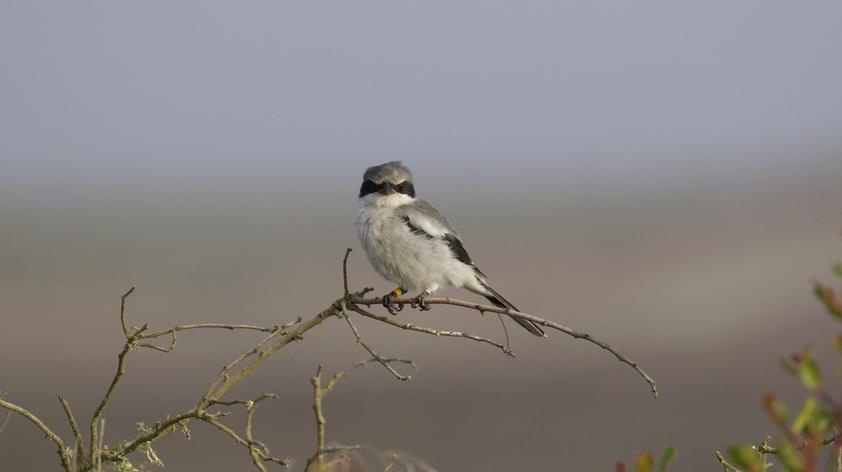
Exceeding at breeding: An extra long year of conservation breeding for shrikes
In 2012, a perfect storm of poor conditions began for the San Clemente Loggerhead Shrike, a critically endangered songbird found only on San Clemente Island. The island received below average rainfall from 2012-2016, and those sustained drought conditions took its toll on the wild shrike population, dropping to almost historic lows, likely due to reduced food availability.
In 2018, it was the second driest year on record (2004-present), and with little rain, there was a reduced amount of food scampering and flying about for the shrikes to catch and cache. As 2019 began, the winter rains came full force, but a few late storms likely caused abandonment of several wild nests, resulting in reduced early-season output. With the population in decline, and 2019 off to a bad start, the ICR Shrike Project had some major ground to cover to help change the course for 2019.
For over two decades the San Diego Zoo Global has been working as a collaborator with the U.S. Navy, who own this island located 65 miles off the coast of San Diego, to recover this fierce little endangered bird. Our team manages the conservation breeding element of the recovery effort, and our goal is to breed shrikes and provide individuals for release to help augment the wild population.
Typically, wild shrikes have great breeding success following wet winters, many even raising two clutches in a good year. To capitalize on what was projected to be a good year, we released adults into the wild right before breeding would begin. Two of our bonded pairs were released, as well as ten solo females to offset an uneven gender ratio in the wild. Since we carefully monitor the lineage of the shrikes on this island, many of these females were released near the breeding territories of solitary males who would be a good genetic fit.
Meanwhile, our team was very busy preparing our flock for the breeding season. Females were put in adjacent enclosures to their potential mates. Males courted their new neighbors with songs, wing flutters, and bowing. They passed gifts of crickets, mouse pieces, and the crème de la crème—a lizard’s tail—to the beaks of their prospective mates in the hopes of winning their affection.
Hidden away with binoculars in hand, we carefully observed our pairs to ensure the success of this courtship, and watched as the pairs began to start their families after making introductions. By the time May rolled around, 38 chicks had hatched, learned all that they could from their parents, and reached independence, allowing the adults to retire for the year and concentrate on molting.
As our breeding season drew to a close, the wild shrikes were not having an equal amount of success raising chicks of their own, despite the abundance of prey. With so few juvenile shrikes in the wild at that time, and despite our earlier release efforts, something more still needed to be done. Knowing that juvenile survival is often higher following wet winters, the decision was made, for the first time ever, to restart the breeding process with some of our previous pairs after weeks of separation.
Having never done this before, we focused our efforts on a small subset of our breeding birds. Four pairs were chosen based on their success from the first round of breeding, as well as how well-represented their genetics were in the population. The female shrikes that had been moved to their winter housing were moved back and the courting process began once again.
Three months later, the last juveniles were released to the wild.
Our hectic breeding season was finally over. From February to August we were engrossed in hours of observations, intricate and evolving plans, and daunting towers of dirty food pans, making this our longest breeding season to date.
After these exhausting efforts, we had achieved our goal, and made 2019 our most productive year yet. Even though we kept five of this year’s juveniles to bolster the genetic and demographic diversity of our flock, we released a total of 58 shrikes to the secluded, rocky canyons and windswept slopes of San Clemente Island.
All photos belong to the U.S. Navy. Michelle Klausenstock is an Aviculture Volunteer.













